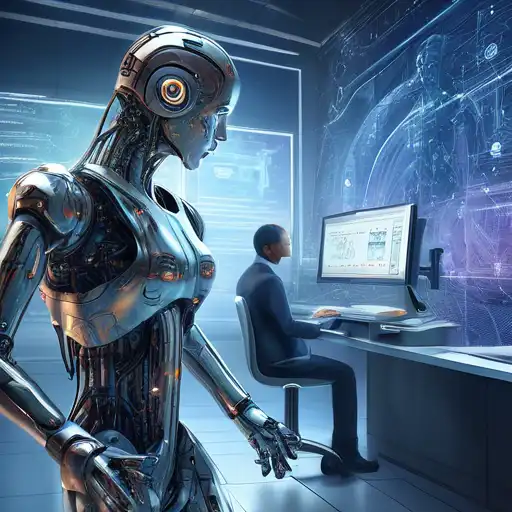Introduction to AI and Machine Learning
In the rapidly evolving world of technology, Artificial Intelligence (AI) and Machine Learning (ML) are two terms that often come up in discussions about the future of computing and automation. While they are closely related, they are not the same thing. This article aims to demystify these concepts and highlight the key differences between them.
What is Artificial Intelligence?
Artificial Intelligence is a broad field of computer science focused on creating systems capable of performing tasks that would normally require human intelligence. These tasks include problem-solving, recognizing speech, learning, planning, and understanding natural language. AI can be categorized into two types: narrow AI, which is designed to perform a narrow task (e.g., facial recognition or internet searches), and general AI, which can perform any intellectual task that a human can.
What is Machine Learning?
Machine Learning is a subset of AI that provides systems the ability to automatically learn and improve from experience without being explicitly programmed. ML focuses on the development of computer programs that can access data and use it to learn for themselves. The process of learning begins with observations or data, such as examples, direct experience, or instruction, to look for patterns in data and make better decisions in the future based on the examples that we provide.
Key Differences Between AI and Machine Learning
While AI and ML are often used interchangeably, there are distinct differences between the two. Here are some of the key distinctions:
- Scope: AI has a broader scope than ML. AI aims to simulate human intelligence, while ML focuses on enabling machines to learn from data.
- Functionality: AI can function without ML, but ML is a pathway to achieving AI. Not all AI systems learn from data; some are rule-based.
- Applications: AI applications range from robotics to natural language processing, whereas ML is more focused on data analysis and pattern recognition.
How AI and Machine Learning Work Together
Despite their differences, AI and ML complement each other in many ways. ML is often the driving force behind many AI applications, enabling them to become more accurate and efficient over time. For example, recommendation systems like those used by Netflix or Amazon leverage ML to analyze your preferences and behavior to suggest products or movies you might like.
Future Trends in AI and Machine Learning
The future of AI and ML is incredibly promising, with advancements in technology paving the way for more sophisticated and intelligent systems. From autonomous vehicles to personalized medicine, the potential applications are vast. As these technologies continue to evolve, understanding the distinction between them will become increasingly important for professionals and enthusiasts alike.
For more insights into the latest trends in technology, check out our tech trends section.
Conclusion
AI and Machine Learning are transforming the way we live and work, offering unprecedented opportunities for innovation and efficiency. By understanding the differences between these two fields, we can better appreciate their potential and the challenges they present. Whether you're a tech professional or simply curious about the future of technology, keeping abreast of developments in AI and ML is essential.
